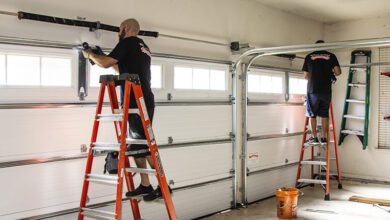The Importance of Management Walkabouts in Building a Safety Culture

Workplace safety doesn’t just happen on its own—it is the result of continuous effort, strong leadership, and active engagement with employees. One of the most effective methods leaders can use to promote safety awareness and accountability is management walkabouts. Unlike formal audits, which focus on compliance, walkabouts provide leaders with the opportunity to interact with employees, identify risks in real-time, and show visible commitment to safety.
In industries like construction, manufacturing, and energy, a robust safety culture can mean the difference between a safe workday and a serious incident. This is where leadership presence through management walkabouts becomes vital. While formal programs such as the OSHA 30 Hour Construction Training provide the foundation for workplace safety knowledge, management walkabouts ensure that safety principles are practiced daily.
What Are Management Walkabouts?
Management walkabouts, sometimes called safety walkabouts or leadership walkarounds, are structured but informal visits by managers or supervisors to the workplace. During these visits, leaders observe safety practices, interact with employees, and address potential hazards.
Unlike inspections that are compliance-driven, walkabouts are about building trust and demonstrating that leaders genuinely care about their employees’ well-being. They serve as a bridge between written safety policies and everyday practices.
Why Leadership Visibility Matters in Safety Culture
When employees see leaders actively engaging in safety discussions, it sends a strong message: safety is a core value, not just a box to check. Leadership visibility has several direct benefits:
- Improved employee morale – Workers feel valued when management takes time to listen to their concerns.
- Early hazard detection – Leaders may identify unsafe practices or conditions before they escalate.
- Stronger accountability – Employees are more likely to follow safety rules when they see managers doing the same.
- Increased trust – Open dialogue builds a culture of honesty and reporting without fear of blame.
In fact, research has shown that organizations with strong safety leadership experience fewer incidents and greater employee engagement.
Key Objectives of Management Walkabouts
To be effective, walkabouts should focus on more than just observation. Successful programs often include these objectives:
- Reinforcing Safety Standards – Ensure employees understand and follow safety procedures.
- Encouraging Two-Way Communication – Allow workers to share safety concerns or suggestions.
- Demonstrating Leadership Commitment – Show that management prioritizes safety.
- Identifying Improvement Opportunities – Spot trends or recurring issues that may require training or process changes.
- Strengthening Relationships – Build rapport with frontline employees.
How to Conduct Effective Management Walkabouts
A poorly planned walkabout may come across as micromanagement or fault-finding. To avoid this, managers should follow a structured yet approachable process:
1. Plan the Walkabout
- Decide on frequency (weekly, bi-weekly, or monthly).
- Select focus areas (e.g., PPE usage, housekeeping, equipment handling).
- Review past incidents to guide the walkabout.
2. Engage with Employees
- Greet workers respectfully and explain the purpose of the visit.
- Ask open-ended questions like: “What safety challenges do you face daily?”
- Listen actively without interrupting.
3. Observe and Document
- Watch how tasks are performed.
- Take notes on hazards, safe practices, or training needs.
- Avoid pointing fingers—focus on improvement.
4. Provide Immediate Feedback
- Acknowledge good practices.
- Correct unsafe behaviors calmly and constructively.
5. Follow Up
- Share findings in safety meetings.
- Implement changes or additional training where needed.
- Recognize employees who contributed valuable insights.
Best Practices for Maximizing Impact
To make management walkabouts more than just a routine, organizations can adopt these best practices:
- Be consistent – Sporadic visits may send mixed signals.
- Lead by example – Managers should always wear PPE and follow safety protocols.
- Balance observation and engagement – Don’t just look for problems; acknowledge positive behaviors too.
- Link findings to training – For example, reinforce lessons from an OSHA Training Course if recurring issues are noticed.
- Track progress – Use checklists and digital tools to monitor improvements over time.
Real-World Example: Construction Industry
In construction, management walkabouts are particularly critical due to the high-risk environment. A project manager visiting a site might notice scaffolding improperly secured. By addressing this immediately and linking it back to OSHA 30 hour construction training principles, they not only prevent an accident but also reinforce safety awareness among the crew.
Such direct involvement shows employees that leadership is committed not just to project deadlines but also to their safety.
The Role of Training in Supporting Walkabouts
While management walkabouts focus on visibility and engagement, they are most effective when supported by strong training programs. Courses like the OSHA Training Course provide workers and supervisors with the knowledge to recognize and mitigate hazards.
By combining formal education with practical engagement, companies can build a holistic safety culture where theory meets practice.
Challenges of Management Walkabouts
Even with the best intentions, walkabouts can face challenges:
- Perception of surveillance – Workers may feel monitored rather than supported.
- Time constraints – Managers may struggle to prioritize walkabouts in busy schedules.
- Inconsistent follow-up – If concerns raised during walkabouts are not addressed, employees may lose trust.
To overcome these challenges, organizations must prioritize transparency, consistency, and accountability.
Benefits of Management Walkabouts at a Glance
| Benefit | Impact on Workplace Safety |
| Leadership visibility | Builds trust and shows commitment |
| Early hazard detection | Prevents incidents before they occur |
| Open communication | Encourages reporting and feedback |
| Reinforcement of safety values | Strengthens organizational culture |
| Stronger employee engagement | Boosts morale and participation in safety initiatives |
Strengthening Safety Through Training
Management walkabouts are a powerful tool, but they are only part of the bigger picture. To truly strengthen safety culture, organizations must combine leadership presence with ongoing education. Enrolling teams in an OSHA Training Course can provide the technical foundation, while walkabouts ensure those lessons are applied on the ground.
When leaders pair their visible commitment with continuous learning, the result is a safer, more engaged, and more resilient workforce.
Conclusion
A strong safety culture cannot thrive without leadership visibility. Management walkabouts play a crucial role in bridging the gap between policies and practice, ensuring that employees not only follow safety standards but also feel supported and valued.
Whether it’s reinforcing the lessons of an OSHA 30 Hour Construction Training program or addressing site-specific risks, walkabouts demonstrate that safety is more than compliance—it is a shared responsibility. Organizations that invest in consistent leadership presence and ongoing training will see fewer incidents, higher morale, and a workplace culture rooted in trust and accountability.




